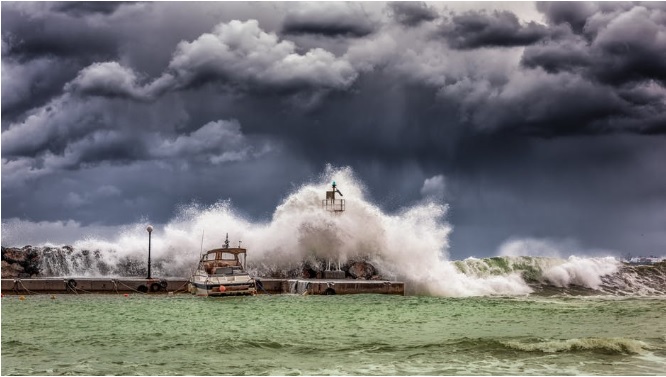What is the likelihood that you could experience dramatic flooding from storm surges or rising sea levels? Do you know?
If you live near a body of water, then you need to ask, “What is my BFE?”
Your BFE dictates the lowest level at which you can build living space without it being impacted by floods.

Here’s what a BFE is and how it impacts things like insurance.
What Is Base Flood Elevation (BFE)?
A base flood elevation (BFE) represents the estimated (computed) height at which floodwater could rise in your area during a base flood.
What is a base flood? According to FEMA, it is a flood that has “a one percent chance of being equaled or exceeded in any given year.”
The BFE measurement is a standard used by all federal agencies as well as the National Flood Insurance Program (NFIP). As a result, identifying the BFE for an area is mandatory when determining the appropriate floodproofing measures.
What does this mean for you? BFEs work along with flood zoning to let you know what kind of risk you can expect on your property.
Flood Zones: What They Mean
Flood zones are areas characterized by FEMA as places with a risk of flood.
The most hazardous flood zones are those categorized as V or A. V flood zones are usually beach-front properties that are the point of impact for flooding. A zones are usually near the water but not necessarily on it.
These areas receive a designation because they experience the highest velocity of waves. Elevation also plays a role.
You can find your flood zone on FEMA’s Flood Insurance Rate Map (FIRM).
Where does the BFE come in?
If you live in a V zone (on the water), then the bottom of the lowest floor elevation must be at the BFE for your area. Usually, this means raising your living space off the ground with piles, posts, or columns. It also means that you need to install your HVAC system at an elevation equivalent to or above the BFE.
What Is My BFE? How to Find It
What is my BFE? If you live or intend to move near the water, you need to know.
Your municipality or county will have flood hazard and zone maps that outline the FEMA flood zones and BFEs for each area. To get these maps, you can contact your local floodplain administrator.
Another option is to use a third-party consumer tool to look up your BFE based on your address.
Why Do I Need to Know My BFE?
You need to know your BFE if you intend to build a new home or you want to make renovations or add an extension. You can’t build living space below your BFE (nor do you want to).
It’s also important to identify your BFE because it dictates the cost and kind of flood insurance you need. It’s mandatory in A and V zones, but not in X zones, which are minimal-risk areas. Additionally, when your BFE is high, then your policy will cost less compared to a low BFE.
Knowledge Is Power When It Comes to Flooding
As sea levels rise and storms become more powerful, it is important to understand the risks in your area. To do that, you need to ask, “What is my BFE?”
You can get all this information from your local government or by using FEMA or third-party tools.
Do you have more real estate questions? Check out our insurance archive for more on protecting your home.
















